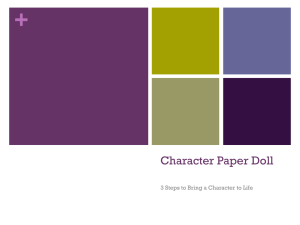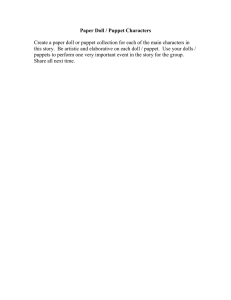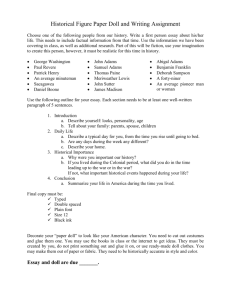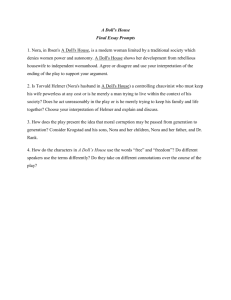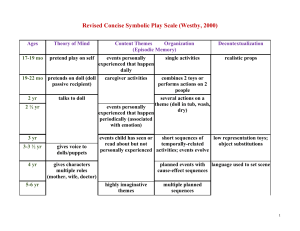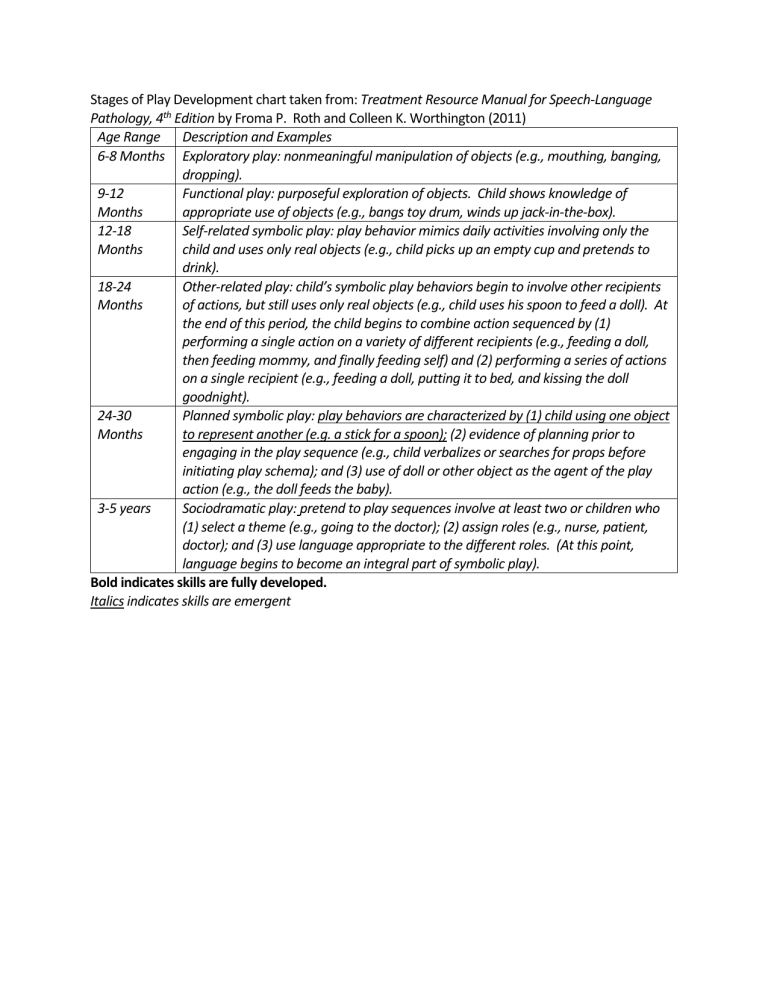
Stages of Play Development chart taken from: Treatment Resource Manual for Speech-Language Pathology, 4th Edition by Froma P. Roth and Colleen K. Worthington (2011) Age Range Description and Examples 6-8 Months Exploratory play: nonmeaningful manipulation of objects (e.g., mouthing, banging, dropping). 9-12 Functional play: purposeful exploration of objects. Child shows knowledge of Months appropriate use of objects (e.g., bangs toy drum, winds up jack-in-the-box). 12-18 Self-related symbolic play: play behavior mimics daily activities involving only the Months child and uses only real objects (e.g., child picks up an empty cup and pretends to drink). 18-24 Other-related play: child’s symbolic play behaviors begin to involve other recipients Months of actions, but still uses only real objects (e.g., child uses his spoon to feed a doll). At the end of this period, the child begins to combine action sequenced by (1) performing a single action on a variety of different recipients (e.g., feeding a doll, then feeding mommy, and finally feeding self) and (2) performing a series of actions on a single recipient (e.g., feeding a doll, putting it to bed, and kissing the doll goodnight). 24-30 Planned symbolic play: play behaviors are characterized by (1) child using one object Months to represent another (e.g. a stick for a spoon); (2) evidence of planning prior to engaging in the play sequence (e.g., child verbalizes or searches for props before initiating play schema); and (3) use of doll or other object as the agent of the play action (e.g., the doll feeds the baby). 3-5 years Sociodramatic play: pretend to play sequences involve at least two or children who (1) select a theme (e.g., going to the doctor); (2) assign roles (e.g., nurse, patient, doctor); and (3) use language appropriate to the different roles. (At this point, language begins to become an integral part of symbolic play). Bold indicates skills are fully developed. Italics indicates skills are emergent

